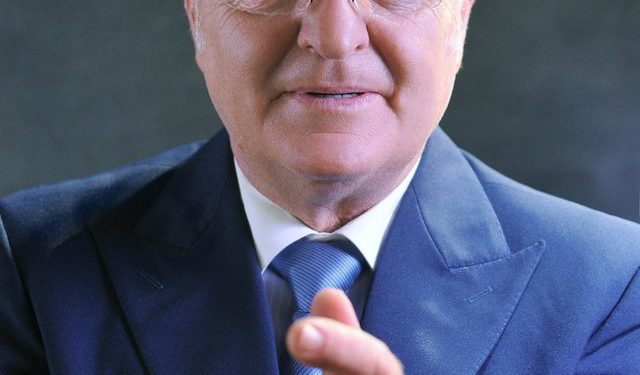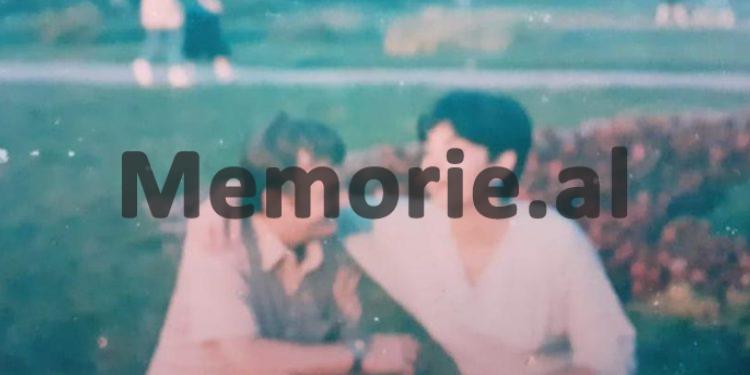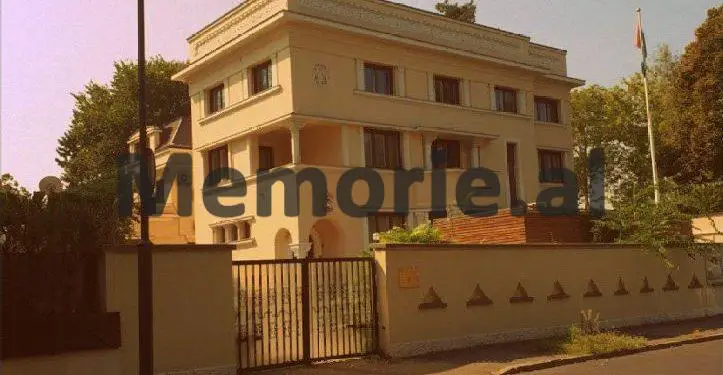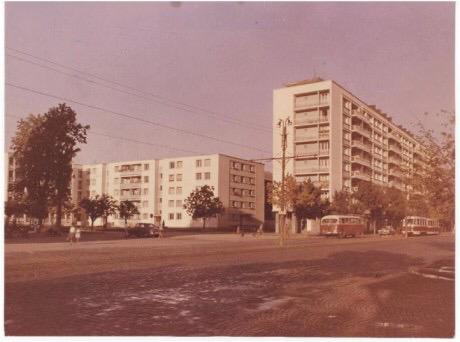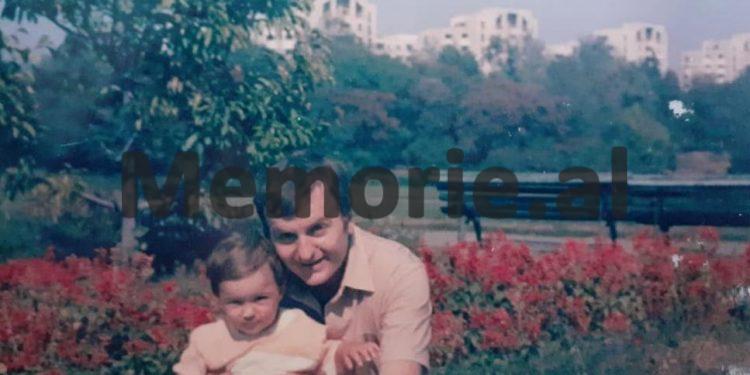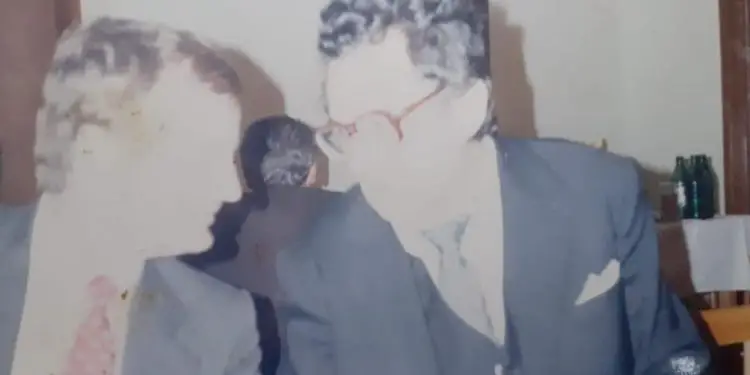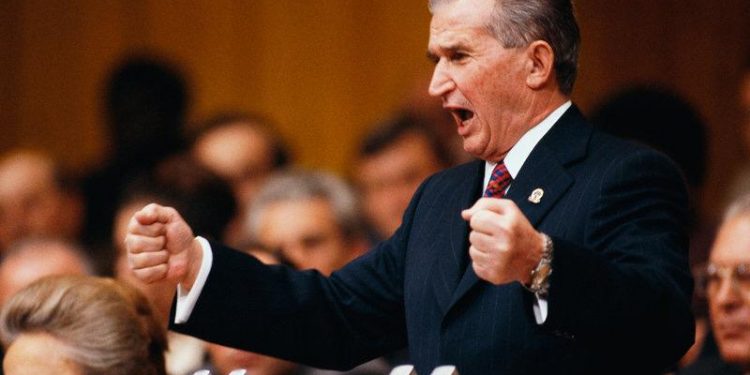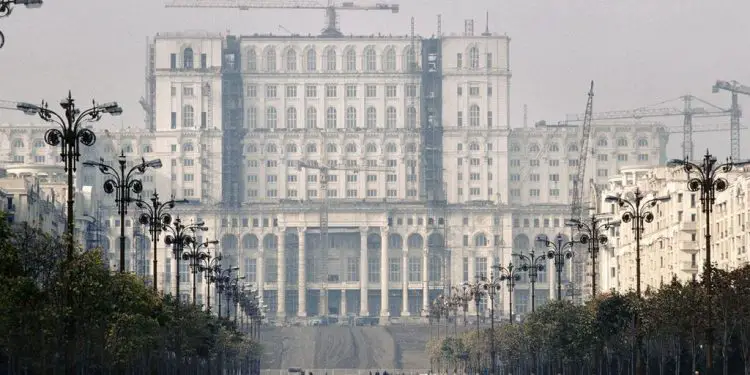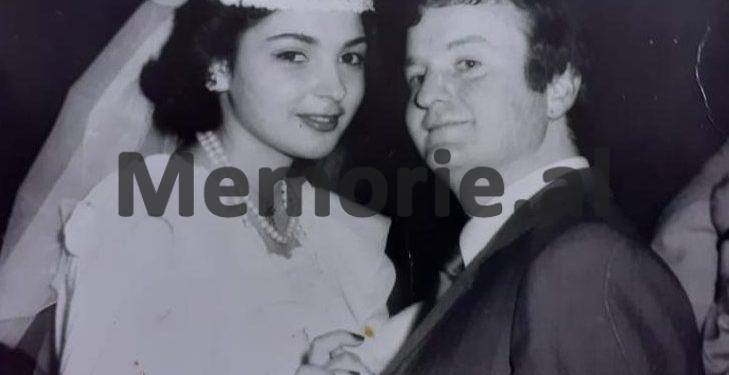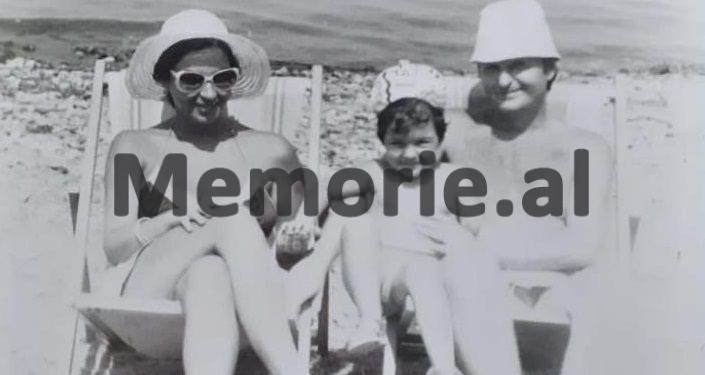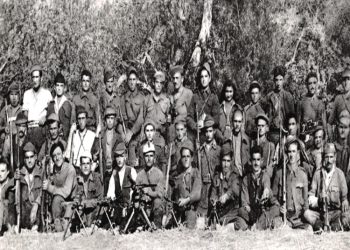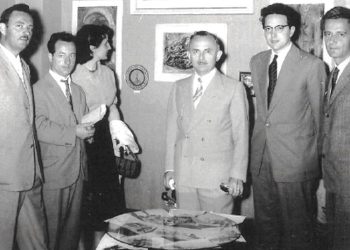Dashnor Kaloçi
Second part
Memorie.al/ publishes the unknown story of the mass protests of the Romanian people at the end of December 1989, which led to the overthrow of the communist leader, Nicolae Ceausescu, who had ruled the country since 1965, after the death of George Dezhit. Rare testimonies of the well-known journalist and moderator, Rezar Xhaxhiu, who from 1987 to March 1991, served as Press and Culture Attaché at that embassy, which exclusively tells Memorie.al, making public for the first time, how the staff of that embassy, led by Ambassador Pirro Vito, experienced the sensational events of the mass protests of the Romanian people, where for several days in a row, the staff of that diplomatic headquarters was forced to take up arms and take up positions in different parts of that building? What messages did they receive from official Tirana through the Ministry of Foreign Affairs and how did they get through the most difficult moment, when the Albanian embassy was surrounded by Army tanks commanded by General Vasile Milea who had joined the protesters, after the news broke that the dictator Romanian, Ceausescu, with his wife, Helena, were sheltered in the basements and tunnels of that embassy?!
“I remember that all the relatives of the staff of our embassy, had gathered together and stood in the basements of that building, under a real uncertainty and panic, of what could happen in the following hours! Meanwhile, that part of our families who were sheltered, outside the embassy building, experienced twice and more with fear, the battle of several days on the streets of Bucharest. I remember my friend, whom I found every time I came back from the embassy, terrified and stiffened by panic, fear, and insecurity. At the time, we had a 6-month-old daughter, and I often found them both under the window sill, to escape the bullets coming from everywhere. It was fired from all sides, and those who were most treacherous were the Securitates USLA (Special Anti-Terror Unit) snipers, which were placed on the terraces of palaces, and official buildings. But in many cases, it was not known who was shooting?! It was Christmas Eve, December 25, 1989, when we learned of Ceausescu’s arrest. He and his wife, Elena, were stopped by an army checkpoint near Tirgovishte. “During this moment, the presidential couple Ceausescu, was heading to an airport, trying to escape from Romania, and seek political asylum in a country friendly to Romania.”
This is how the well-known journalist and moderator Rezar Xhaxhiu recalls the sensational events that took place three decades ago in Romania, where at the end of December 1989, due to the mass protests of the Romanian people in the capital of the country., Bucharest, communist leader Nicolae Ceausescu and his wife, Helena, were detained at a checkpoint on the outskirts of a small town on the border with Hungary in an attempt to flee the country. executed after a ‘flash’ trial!
Located in the ranks of the diplomatic service (as Attaché of the Press and Culture), near the Albanian Embassy in Bucharest since the beginning of 1987, as an eyewitness, Xhaxhiu, had the opportunity to follow closely the protests of the Romanian people, which led to the overthrow of dictator Nicolae Ceausescu, who had ruled that great Balkan country since 1965, following the death of George Dej.
How was Rezar Xhahiu selected to serve in the ranks of Albanian diplomacy, who were the other colleagues he worked with from 1987 until March ’91 when he returned to his homeland, how did the work at that diplomatic headquarters work? and how the staff of that embassy, led by Ambassador Pirro Vito, experienced the sensational events of the mass protests of the Romanian people at the end of December 1989, where for several days, the staff of that diplomatic headquarters was forced to arm themselves and took positions in different parts of that building?
What messages did they receive from official Tirana through the Ministry of Foreign Affairs and how did they get through the most difficult moment when the Albanian embassy was surrounded by Army tanks commanded by General Vasile Milea, after the news broke that Romanian dictator Ceausescu and his wife his, Helena, were sheltered in the basements and tunnels of that embassy?!
Regarding these and other unknown events that took place in the Albanian embassy accredited in Bucharest in the period, 1987-1991, Rezar Xhaxhiu tells us for the first time, in this exclusive interview for Memorie.al, which will continue in some consecutive numbers.
Followed by the last number
Mr. Xhaxhiu, you pointed out a little above that in order to start as an Albanian diplomat, in the embassies accredited in Europe and in other countries of the world, you had to be married. Can you explain more clearly why this rule was?
This was one of the first surprises and absurdities that I encountered not only in that ministry, but also in the whole mechanism of Albanian diplomacy abroad in the period of the ‘80s. From the first days of our appointment there, Minister Reiz Malile, informed us that we should definitely be married, if we wanted to continue our career as diplomats in various embassies. It was absurd for us who were students a few months ago, something that seemed like a joke to us. But then we realized that this was a ‘sine qua non’ condition, if you wanted to be catapulted as a career diplomat in the Albanian embassies in the world. Even today I cannot understand why such a thing was needed. But any attempt to understand it, is in vain.
Once you learned this “rule” how did you act?
I acted as I should have acted. So, I set out in search of my future bride and wife (laughs). Joking. Didn’t I just tell the girl I knew at the time that, if by my girlfriend, she would like to become my wife? I even told him this quickly, because time did not really wait. And here it was. Without any effort and experimentation or research up and down, (laughs). I was a little lucky in that regard.
Would the biography of your spouse and her family go through the famous official filters?
At that time, the name of the girl who would become my wife in the future had to be taken to the Ministry of Foreign Affairs. And if I am not mistaken, in the cadre office which took that name and surname of the respective girl, and inserted it through all the rotating and filtering, cleaning, checking, and verifying mechanisms of the State Security, to see if in the belt second, or third, to the third or fourth cousins, to have any defect, which would not allow her in the future, to become the wife of a diplomat.
And how long did this process take?
After a 15-day waiting period, the long-awaited official response would follow. She literally said: “Your future wife is worthy to come with you to the embassy.” Something like that, was the answer. And here the waiting ended, and with it, the anxiety, impatience, etc. When I think about it today I say…, how is it possible for all this to happen?! But even for this I have not received any honest answer!
Before leaving for Romania, did you have certain instructions from the officials of the Ministry of Foreign Affairs, how you should behave, and what you should do or not, in that country?
Of course, yes. It would be a series of such meetings, but that final meeting, which would finally put its stamp on it, would take place, with Mr. Polena, who, as a scrupulous and professional technician he was, did not forget to give orders in detail. the smallest detail of our conduct as diplomats, and of the care we should have had as official employees, in a revisionist country as labeled Ceausescu’s Romania at the time. The advice was one of the strangest and most absurd of that period, but it still had to be taken seriously and with the highest sense of responsibility.
How do you remember your departure for Romania, and in what year did you go there?
It was October 1987. We left Tirana on a TAROM (Romanian airline) flight to a deserted Rinas, as at that time there were two airlines operating at our airport, TAROM. “Romanian” and Hungarian “MALEV”.
How did you experience this sensation?
It was a journey towards the unknown and towards a new life. A life where, a part of which would no longer be yours, but of others, who would constantly monitor, closely monitor, and advise permanently. I was heading towards a new world that would not be at all, as I had previously thought. The embassy was also a piece of Albania in foreign countries, with its pros and cons.
Which sector of our embassy would you cover as a diplomat?
I was arriving in Romania as Secretary of Press and Culture, or as it is otherwise known in diplomatic language, ‘attaché’. This would be the lowest rank in the hierarchy of employees of the Albanian embassy at that time.
In which district of Bucharest was the building of the Albanian embassy located?
The building of our embassy was in an area with other embassies, somewhere on the Boulevard “Aviatilor” if I am not mistaken. She has been next to the Argentine embassy, where today is the famous street of diplomatic missions, called “Modrogan”.
Is it true that that villa was once one of the residences of the Queen of Romania?
Yes, this is very true. That building was a three-storey villa of the XVIII century with ample facilities and spaces, as well as a super green courtyard next to it. This villa belonged as a residential residence to one of the queens of Romania, whose name I do not remember now.
Who would wait for you at the airport, and who would accompany you to the embassy premises?
Embassy staff greeted us at Bucharest Airport. It was the First Secretary, the Economic Advisor, and the driver if I am not mistaken. We then had a friendly meeting at the embassy premises, with Ambassador Zoi Toska and other staff members.
How many people did the staff of the Albanian embassy in Romania consist of?
We were somewhere with 13 or 14 families attached to the embassy at that time.
What was the first impact left to you by the Romanian capital, Bucharest, given that it is one of the most developed metropolises in the region, otherwise known as the “Paris of the Balkans”?
It was definitely an impact, shocking. From the beginning, we encountered super wide boulevards, 18th and 19th century buildings, extremely luxurious hotels, obviously and giant buildings, equipped with a very elegant lighting, numerous traffic lights, endless parks relaxing, magnificent lakes and gardens everywhere, well-kept and well-dressed people, not to forget here, the river of cars that not infrequently caused chaos and traffic in the city. So, a total shock, considering the desert of Rinas, which we had left two hours ago, but also the sadness of a miserable Tirana of the late ’80s.
Can you remember the names of the Albanian employees of the Albanian embassy, and what concrete tasks they were engaged in, there?
Zoi Toska was our ambassador to Romania at the time I arrived. He knew the Romanian language very well, he had probably studied there. Viktor Dhroso, was the First Secretary of the embassy, so he came second in the hierarchical rank, after Ambassador Toska. After him came the Second Secretary, Qemal Gjokutaj. From the Ministry of Foreign Trade, we had Viron Andrea, while as Economic Secretary, was Ilir Shijaku. The late Marco Bello, was like me, secretary for the Press and Culture. The cipher was Andon Koçi, as well as other personnel, such as Third Secretaries, Defense Attachés, radio operators, drivers, etc. I can mention different names of these positions, such as Vangjel Kovaçi, Ymer Xhaferri, Ali Kuka, Lulzim Fuga, Luan Visha, Xhevair Ago, etc.
What were your relationships with them?
We were, so to speak, like a family there at the embassy. Within which, there are sometimes good relationships and sometimes tense relationships. Sometimes a little jealousy, and other times jealousy, envy, competition, words behind the scenes, gossip, reports without harm, without harm, as we say.
Can you explain more concretely about this?
Women who envied each other, even for their clothes, men who were influenced by their wives, drivers who behaved as if they were real diplomats. There was from all aspects of life, our embassy in Bucharest. It was a small, miniature Albania. But it is not for me to take unwashed clothes out on the balcony (laughs).
But in terms of residential residences, where would you and your family be accommodated?
Part of the staff, four families (including my family), would live outside the embassy building, in a block of flats with ordinary Romanians.
Where was this apartment block?
That apartment block was located in an area somewhere very close to the Romanian National Circus. It was a quiet area on Route 15, “Circului” in the second area of Bucharest.
In relation to Tirana, what were the living conditions like in Bucharest?
Compared to Tirana, living conditions in the Romanian capital were quite normal. The place where we lived was an apartment furnished in the most basic way possible, with Pogradec furniture, or as in Pogradec. And if they had not come from Tirana, they should have been ordered in a Pogradec in Romania…! (Laughing).
So, the living conditions in Bucharest were the same in her sister, Tirana?
In fact, they were by far the best. Look, in my apartment, we had a gas central heating system that was not known in communist-era Tirana. Likewise, everything was cooked with gas, while there were subways and trams, to facilitate daily circulation. There were also huge warehouses, although these in Ceausescu’s time were empty of goods and products…!
You said a little while ago that you would cover the Press and Culture sector at the embassy. What were the cultural relations between Albania and Romania in the 1980s?
Cultural relations between communist Albania and Romania would not be very intense, as there were few cultural exchanges between Tirana and official Bucharest. The great economic problems of both countries were the topic of the day and the cultural relations between the two countries, in relation to political and economic issues, came to the fore!
Have you had contacts with Albanian students studying at Romanian universities?
At the time I served at the embassy, there were no Albanian students studying in Romania. If I am not mistaken, the last generation of these students belonged to the ’70s, mid or late those years.
Can you briefly describe the political, economic, and social picture of Ceausescu’s Romania?
A vast Romania, nearly half the size of the Balkan Peninsula, with 25 million inhabitants, and endless fields, and abundant above-ground and underground wealth, was totally, all immersed in Migjenian poverty, and with a strange poverty.
What were the features and characteristics of Romanian society that stood out most in the late 1980s?
It was an open but oppressed society, the Romanians were a people who performed religious rites freely, but were forbidden to meet foreigners, even tourists. A simple Romanian had a private car, but that was monitored non-stop, and that he should not express any opinion of his own, free and independent./Memorie.al
Continues tomorrow




